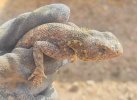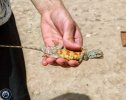Roney loves food
New Member
Hello guys, I am from Morocco and I love reptiles, I have very good turtles and I want to breed a new reptile (agama bibron's). I need someone with experience in breeding agamas in order to get information, for example: food? Enclosure? The difference between male and female? etc...

